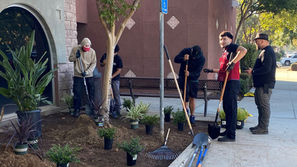Opinion: Is California really growing again?
- Jim Glynn
- May 17, 2024
- 1 min read
The Golden State was in a population-growth slump. The state stopped growing in 2019. That was a previously unexperienced phenomenon. When I wrote my chapter for California’s Social Problems (2002, Sage Publications), I began my analysis of our demographic history with the arrival of Portuguese explorer Juan Rodriguez Cabrillo in San Diego Bay in 1542. For our purposes today, suffice it to say that for the next 250 years, European settlement was very slow but steady.
In looking at population “growth spurts” of immigrants, I divided our history into four periods: 1542 (European Discovery) to 1850 (Statehood), 1851 (Gold Rush) to 1890 (Merger of the first Railroad Systems by Charles Crocker, Mark Hopkins, Collis P. Huntington, and Leland Stanford), 1891 (Movie Industry and Manufacturing) to 1950 (Seeds of Silicon Valley), and 1951 (Technological Breakthroughs) to Present (Biotechnology and Artificial Intelligence). I just added AI to bring us up to date.
Early population and expansion
Before the coming of Europeans, California was populated for an estimated 13,000 to 15,000 years by small tribal clans. When the first Europeans arrived, it is estimated that anywhere from 100,000 to 300,000 indigenous people lived along the coasts, in the valleys, and in the foothills of the Sierra Nevada Range. Over about 300 years, European population grew from zero to about 93,000 in 1850.


























Comments